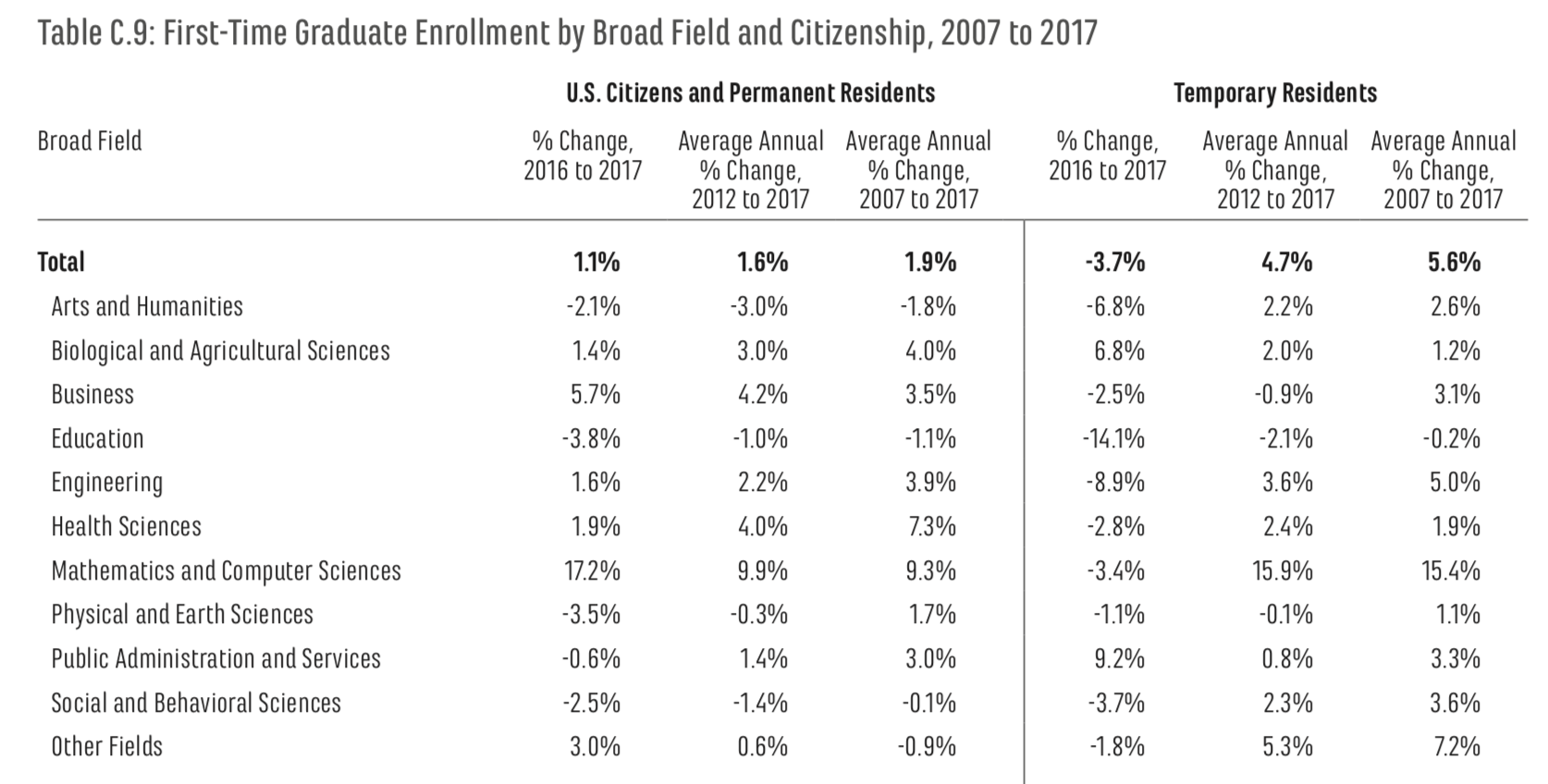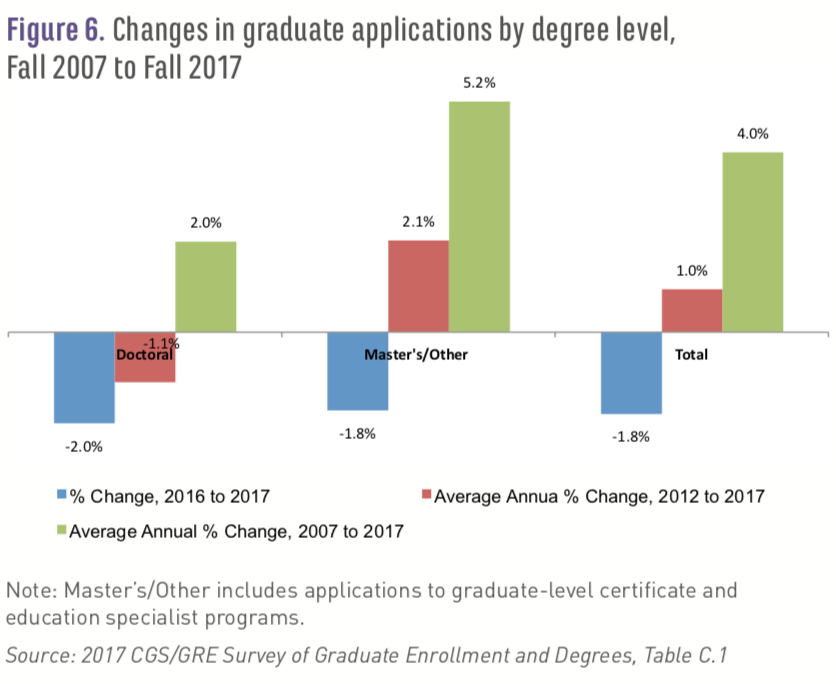You have /5 articles left.
Sign up for a free account or log in.
First-time international graduate enrollments in U.S. institutions fell 3.7 percent from fall 2016 to fall 2017, according to a new report from the Council of Graduate Schools. While the council isn’t certain what caused the drop, it’s hard for it -- or anyone else -- not to think of the Trump administration’s stance on immigration.
While actual visa and other policy regulations appear to have impacted relatively few prospective students, “the climate and reputational side of U.S. grad ed” may be a different story, said Hironao Okahana, associate vice president for research and policy analysis at the council. “That’s an area we’re looking into at the moment.” There also have been reports of students being rejected for visas, signaling that even if rules haven't yet changed all that much, enforcement has.
Institutions with the highest research productivity, by Carnegie Classification of Institutions of Higher Education, saw no such decline: their enrollments actually increased 3 percent year over year. But for doctoral- and master’s degree-granting universities with lower research profiles, “it might be the case that prospective graduate students are looking at institutions elsewhere in the world,” Okahana said.
While the council is closely monitoring international enrollments, the longer-term picture still looks good. The five- and 10-year average annual increases are still 4.7 percent and 5.6 percent, respectively. Still, this year’s drop is the second annual decrease in more than a decade. Indeed, Suzanne Ortega, council president, called the emerging trend “worrisome” in a statement about the organization’s annual degrees and enrollments report, out today.

Among U.S. citizens and permanent residents, first-time graduate enrollment increased by about 1 percent last year. But considering the international numbers, overall first-time graduate enrollment dropped by one-tenth of a percent and the number of applications fell 1.8 percent year over year. Ortega said that lower applications and enrollments over all are consistent with a strong U.S. economy.
By discipline, several fields saw application increases: business (4.5 percent), public administration and services (1.9 percent), education (1.8 percent), and mathematics and computer sciences (1.7 percent). Those applications translated to increased enrollments in the following fields: mathematics and computer sciences (3.8 percent) and business (3.7 percent).
Over five and 10 years, mathematics and computer sciences saw enrollment increases of 12.8 percent and 12.1 percent, respectively. The health sciences saw enrollment increases of 4 percent and 6.9 percent.
Engineering enrollments fell by 3.8 percent year over year, compared to just about 1 percent the year prior. Engineering applications fell 7.3 percent last year. Okahana attributed some of this change to the decrease in international students.
Ortega said the continued growth in health sciences indicates that graduate education “is aligning with the increasing work-force demand for advanced degree holders.” Many of the fastest-growing occupations are in mathematics and computer sciences and the health sciences, she said, including physician assistants, occupational therapists, mental health and substance abuse social workers, mathematicians, and computer and information research scientists. Entry-level jobs in all these fields typically require at least a master’s degree, Ortega added.
As in previous years, most -- 74 percent -- of the 1.8 million students at 619 institutions included in the council’s survey were enrolled in master’s degree programs. For the eighth year in a row, the majority of degrees awarded went to women. Men still earned the majority of graduate degrees in many sciences, technology, engineering and math programs, however.
The number of master’s degrees awarded by institutions participating in the council’s survey increased by 4.6 percent last year. Graduate certificates made up 5.5 percent of all degrees conferred.
First-time enrollments in doctoral programs decreased by 0.8 percent last year, with some of the biggest declines seen -- perhaps unsurprisingly, given the poor tenure-track job market -- in the arts and humanities (5.7 percent) and physical and earth sciences (2.3 percent). Business Ph.D. program enrollment also fell a bit.
Graduate applications in the arts and humanities decreased 1.8 percent year over year. Doctoral arts and humanities first-time program enrollment decreased by 5.7 percent. Those enrollments dropped 26.2 percent at the graduate certificate level and 4.9 percent at the master’s level.
Some 24 percent of all U.S. citizens and permanent residents enrolled for the first time last year were underrepresented minorities. Public administration had the largest share of underrepresented students, at 15 percent Latino and 19 percent black students. Both these groups had modest increases in enrollments last year, of 2.2 percent and 5.6 percent, respectively. Public administration also saw an international student enrollment boom of nearly 10 percent.






